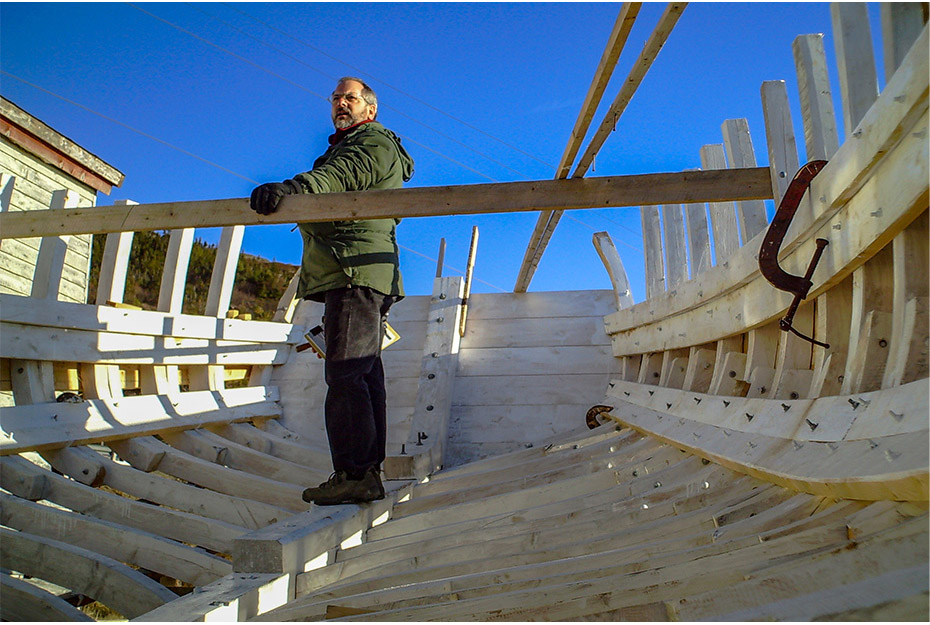ICH Development Officer, Heritage Foundation of Newfoundland and Labrador, Canada
Newfoundland and Labrador is the easternmost Canadian province. Situated on the Atlantic, it incorporates the island of Newfoundland and mainland Labrador to the northwest, with a combined area of 405,212 square kilometers. The population is just over 514,000, with the greatest concentration on the eastern portion of Newfoundland.
The province has a long and rich intangible cultural heritage, with native populations and predominantly English and Irish settler populations. Newfoundland has a long history associated with the North Atlantic cod fishery, and much of its local culture and flavor evolved in small fishing villages scattered along the island’s long coastline. With many small, isolated communities, linguistic, cultural, and social traditions persisted in Newfoundland and Labrador long after they had faded or changed in the European communities where they were born. The Heritage Foundation of Newfoundland and Labrador (HFNL) administers the province’s Intangible Cultural Heritage Strategy and works to safeguard traditional culture. The ICH Strategy provides opportunities for community members to share their ideas, experiences, and traditional knowledge. Through sharing knowledge, HFNL hopes to open up intergenerational and intercultural conversations about shared values and experiences.
HFNL undertakes many initiatives to safeguard culture and traditions for future generations, including organizing festivals and special events celebrating different traditions. One of its broad initiatives is the ICH Inventory, a repository of collected ethnographic material, including audio interviews, oral histories, video interviews, events and practices recordings, photographs, ephemera, and print materials, such as maps, drawings, architectural floor plans of vernacular buildings, and even scans of charcoal rubbings made from historic grave markers.
HFNL has partnered with the Digital Archives Initiative (DAI) at the Queen Elizabeth II Library at Memorial University in St. John’s, the provincial capital. The DAI is a long-term initiative to digitize the university’s holdings, and it has proven to be a useful tool for continually digitizing ICH documents. HFNL and the Department of Folklore at Memorial University have created a regularly updated website portal devoted to ICH activities. The DAI’s collection of ethnographic materials for the ICH inventory component has required the development of guidelines for metadata content, compiled in cooperation with the Queen Elizabeth II Library. These guidelines follow recognized best practices for describing digital resources on the web and include an ethnographic thesaurus of keywords based on a similar resource created by the U.S. Library of Congress, but modified to better reflect the ICH of Newfoundland and Labrador.
The material on the ICH inventory is organized in one of two ways. First, it can be organized by community. The area under our jurisdiction is broken into five regions, and within each region, a town or municipality can create its own collection. Second, material can be arranged by thematic categories, using the five broad ICH categories defined by UNESCO and then into sub-categories. Topics represented in the collection included boat building, food storage, forestry, fishing, basket making, and holiday traditions.
The selection of topics to be included in the ICH inventory is both proactive and reactive, allowing for a great deal of fluidity in terms of what is safeguarded. The ICH committee has, in the past, set thematic priorities for research and collection based on traditions that the committee feels are under significant threat. For 2012 and 2013, for example, these priorities included knowledge about the inshore cod fishery (including salt fish, tool manufacture and use, and traditional ways of locating fishing grounds), the lumber industry (mill culture, local sawmills, and woodsmen), aboriginal culture and language, traditional dance, and the history of whaling in the province.
Where possible, towns and neighborhoods help set priorities based on local needs and perceptions of what is at risk. In a few instances, community participants were led through a facilitation process where they were introduced to the ICH categories. Participants then wrote all the types of ICH they could think of in their area. Participants looked at the long list of ICH items they had identified. They then selected the top five or six items that they thought were most under threat in their communities. They did this by using a voting system, where every participant checked off the items they thought to be interesting or at threat, or things that they felt needed to be worked on by their community. Votes clustered around certain topics, and those were selected for future work.
In some projects, community members are trained in the inventorying and documenting processes, giving these people the ability to document their own ICH. HFNL regularly organizes workshops on ethnographic collection techniques and cultural documentation; workshops on the technical aspects of collecting ethnographic materials, such as photography, Google mapping, cognitive mapping, audio recording; and workshops on project planning.
As a guiding principle, our provincial ICH strategy recognizes that including multiple voices, even those of seniors, is important in all work relating to ICH. ICH is kept alive and is relevant to a culture when it is regularly practiced and learned within communities and between generations. In many instances, elders in our communities are the bearers of many of our traditions and customs and have an important role in setting priorities for community-based research and being valuable information sources for documenting traditional knowledge. We strive to celebrate the voices of seniors by keeping them involved in the various levels and types of work we do and by documenting their knowledge in the process.







